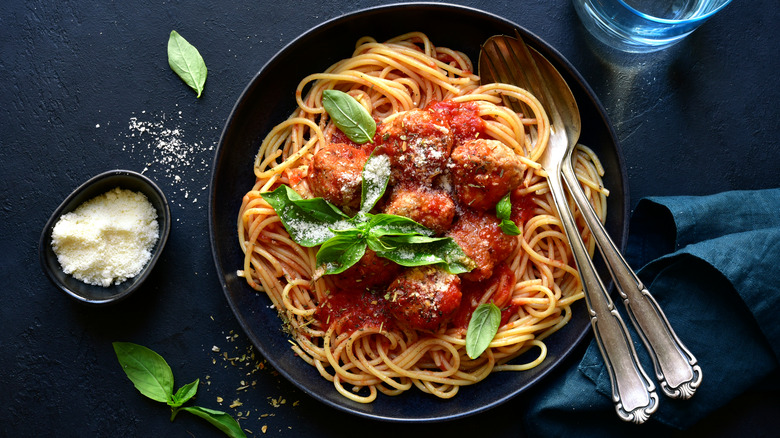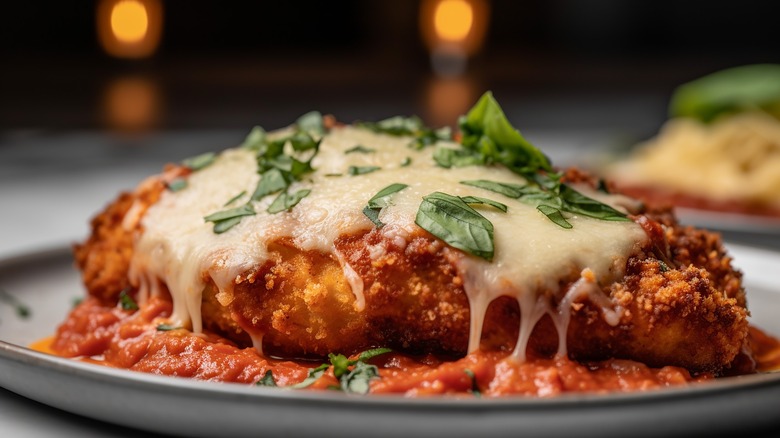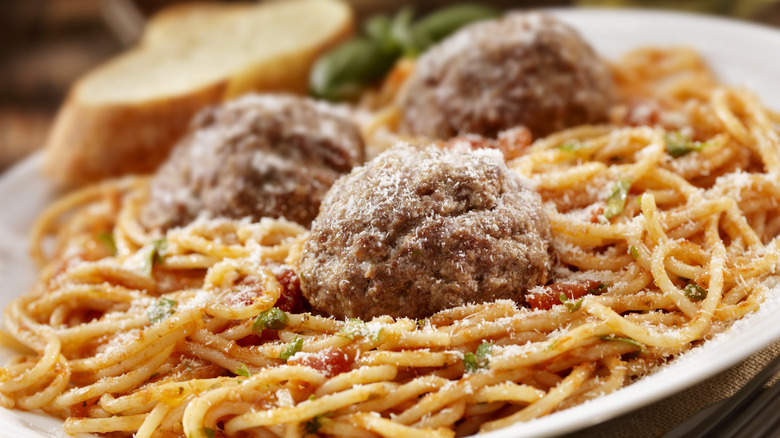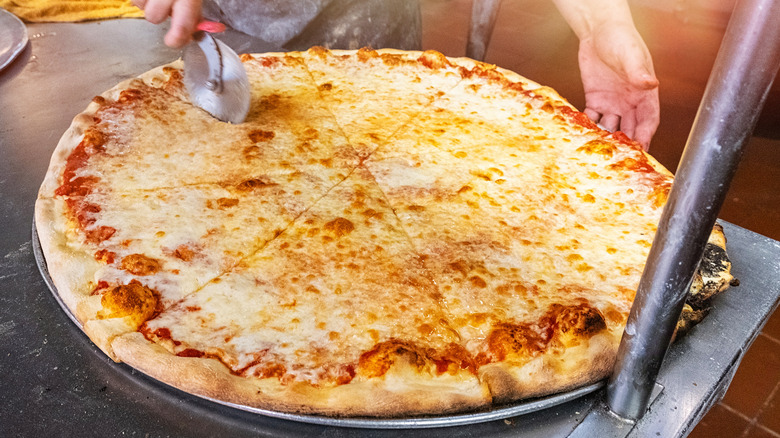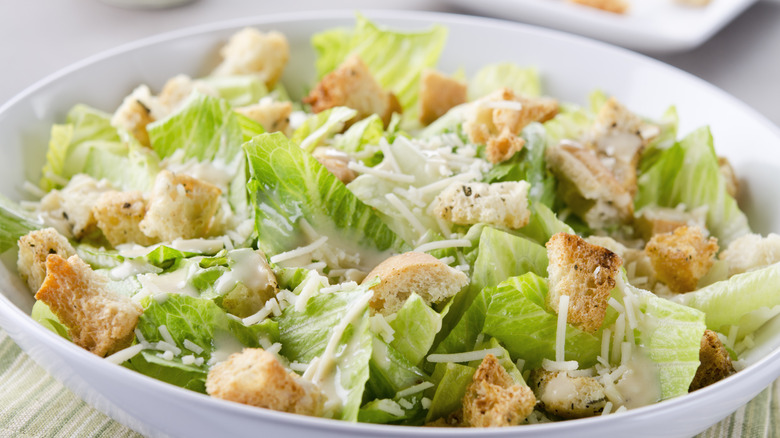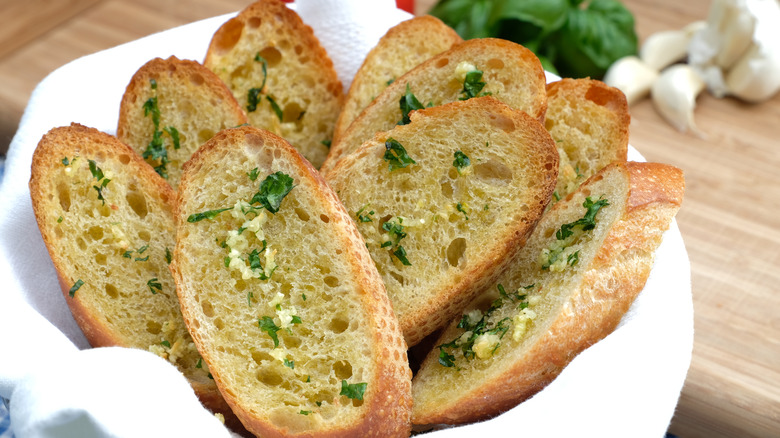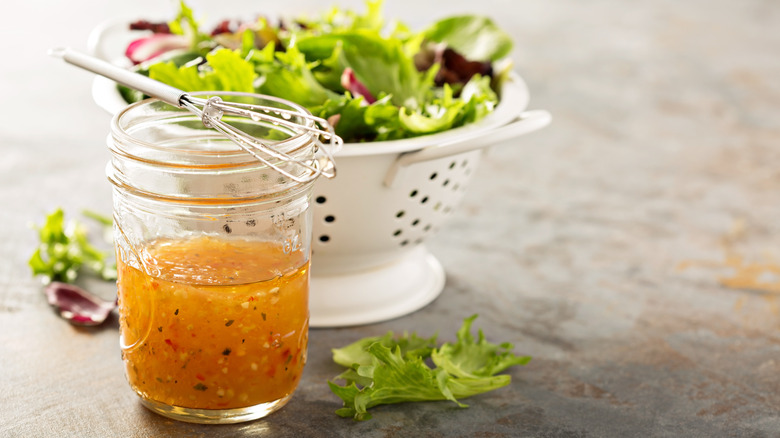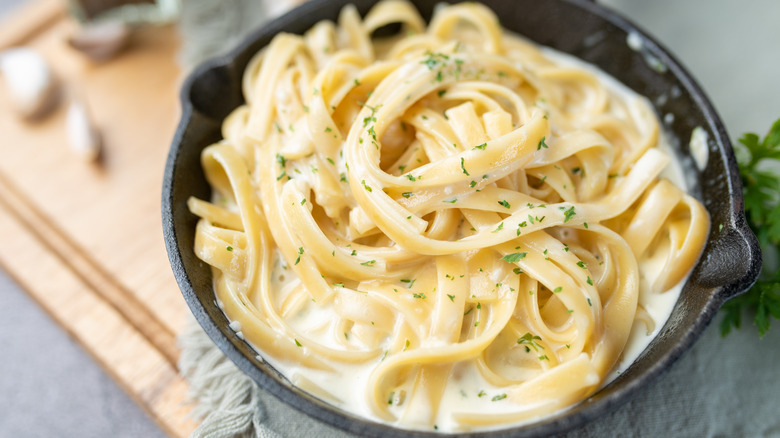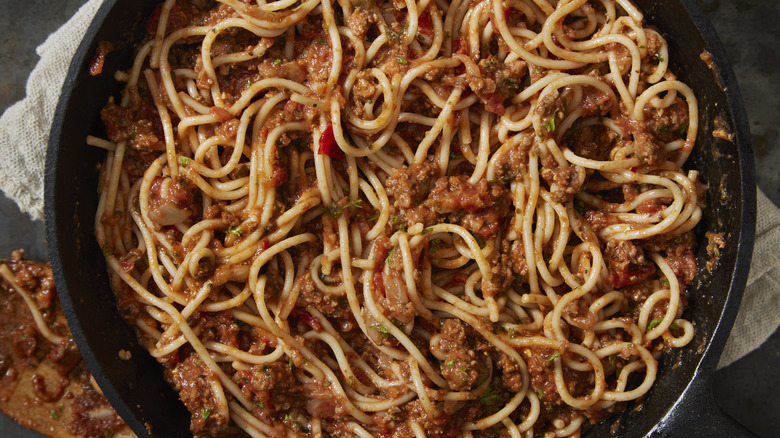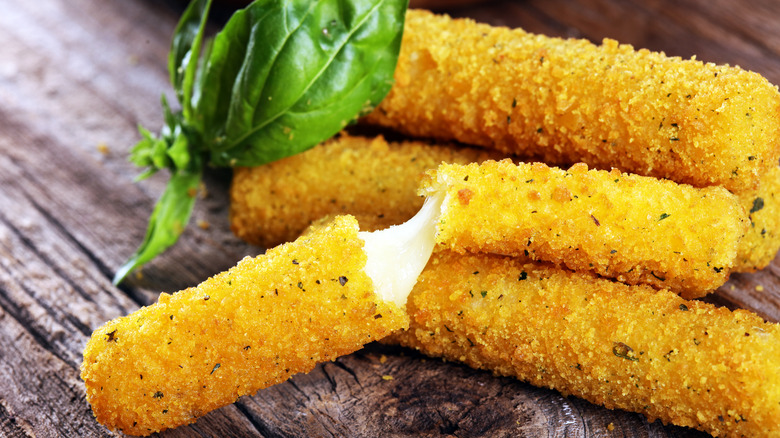10 'Italian' Foods That Aren't Actually Italian At All
One of the most common causes of culture shock for travelers to Italy might surprise you: the food. Italian food is beloved in many countries around the world, but not all of our favorite "Italian" dishes are actually served and eaten in Italy (or at least, not outside of restaurants catering to tourists). Most cuisines that have gone international have their local variations, but even some of the best-known "Italian" meals, like chicken Parmesan and spaghetti and meatballs, are not Italian at all.
Many dishes we consider Italian are actually Italian-American, created by over 4 million immigrants, primarily from southern Italy, who arrived in the U.S. in the late 19th and early 20th centuries. In addition to adapting their traditional recipes to locally available ingredients (often including some canned or frozen elements, as opposed to Italian food's emphasis on fresh ingredients), they also began to use more meat, since it was less expensive in America. For Italian immigrants who went into the restaurant business, adapting their food to local tastes and preferences was another major influence on how they prepared their traditional dishes.
Italian-American food is its own cuisine, an important thing to keep in mind if you're headed to Italy and expecting to find all of your favorite comfort foods (although we're sure you'll quickly discover delicious substitutes). Whether Italian-American or of other origins, here is a list of some of the most popular "Italian" foods that aren't Italian at all.
Chicken (or veal) Parmesan
Chicken or veal Parmesan is the ultimate comfort food or restaurant treat for many. The basic ingredients are a halved, breaded, and fried chicken breast (or veal cutlet), topped with sliced or shredded mozzarella cheese. It's then covered in a tomato-based Italian sauce, usually marinara or a similar variant, and typically served with spaghetti, although you might see other options — even chicken Parmesan in a sandwich.
Chicken and veal Parmesan have several names, notably chicken or veal parmigiana, a common alternative. However, the recipe doesn't include Parmesan cheese, and food historians argue that it didn't originate in Italy's Parma region. In fact, this dish isn't Italian at all. It's an evolution of melanzane alla Parmigiana, otherwise known as eggplant parmigiana, which is served and eaten in Italy.
As with many Italian-American foods, this new dish was influenced by the lower cost of meat in the United States. It first appeared widely on U.S. menus in the 1940s (the 1900s for veal), and by the 1950s, it was popular in Australia as well. The chicken variant, often called chicken parm in the U.S. — and chicken parma or parmi in Australia — is particularly beloved in both countries today. Another typical Italian-American feature of chicken Parmesan is the use of frozen, pre-breaded chicken breasts instead of freshly fried and breaded ones. That's blasphemy for Italian food purists, but let's be honest: For most of us, however it's made, chicken Parmesan is undeniably delicious.
Spaghetti and meatballs
When many people think of Italian food, they picture spaghetti and meatballs. However, while this dish is a popular "Italian" offering in many countries around the world, it is actually not eaten in Italy at all. Yes, there's pasta in Italy, and a number of tomato-based sauces. There are meatballs, too — but here's where the differences start. In Italy, the rough equivalent of meatballs is called polpette. Often, but not always, consisting of seasoned meat, these ball-shaped foods are much smaller than the meatballs most of us are familiar with, and — big difference number two — they're never served with pasta. While there might be some exceptions, as a general rule, in Italian cuisine, pasta and meat are separate courses.
But that's not the case for Italian-American cuisine, where meat has become a part of many traditionally meat-free Italian dishes, reflecting the late 19th and early 20th-century Italian immigrants' delight that it was so affordable in the States. Adding meat to typically vegetarian dishes was also a way of adapting Italian food to American preferences. Spaghetti (or another pasta) and meatballs (usually made of seasoned ground beef, or a mix of ground beef and pork) have become an Italian-American staple today. Many Italian-American families have their own slight variants on the ingredients of their meatballs and the seasoning of their sauce (or gravy, for those of us from North New Jersey), and these family recipes are often a source of pride.
New York-style pizza
People may associate New York or New York-style pizza with Italian food due to the large Italian-American population in the New York area. However, if you go to Italy, you'll see that the pizza served there is very different. Like so many other "Italian" foods, New York pizza is actually an Italian-American variant of the original, which was first made in Naples. Italian immigrants began making their own version in the late 19th and early 20th centuries in America.
Traditional New York pizza is topped with dry rather than wet mozzarella, is huge, and available for sale as a whole pie or by individual, very large slices. The crust is relatively thin and soft. You'll often hear that the pizza's rich, greasy taste is due to the minerals in New York's water. Neapolitan pizza, on the other hand, is topped with wet mozzarella, is much smaller than a typical New York pizza, cooked in a wood-fired oven, and usually a bit crispier, with a lighter crust. While New York pizza can be sold by the slice, Neapolitan pizzas are often sold whole, and meant to serve one person. Another big difference between the two is that Neapolitan pizza is eaten with a fork and knife, while a slice of New York pizza is traditionally eaten with your hands — and, for true aficionados, folded to make it easier to hold and eat.
Caesar salad
With a name that evokes Ancient Rome and a recipe that includes many classic Mediterranean ingredients, Caesar salad seems like it must be Italian. But surprisingly, it's not. Caesar salad was invented by Cesare Cardini, an Italian immigrant who owned a restaurant in Tijuana, Mexico. Technically, the salad's name should be spelled "Cesare" in honor of Cardini, but the chef himself seems to have preferred the Ancient Rome-flavored "Caesar" spelling instead.
Cesare Cardini created his salad one day in 1924, when his popular restaurant had run out of ingredients for its usual mixed salad. The salad quickly became a sought-after dish, and in the 1930's, Cardini started selling bottled Caesar salad dressing, which is still available today. Over time, Cardini's recipe changed a bit. Countless variants have also developed as other restaurants, cooks, and dressing moguls began to create their own versions. But we do know that Cardini's original Caesar salad dressing recipe combined egg yolk, lime juice, olive oil, Parmigiano-Reggiano cheese, ground black pepper, and Worcestershire sauce — there were no anchovies listed in the ingredients. In a tradition often kept today, Romaine lettuce was used for the salad. Cardini's original recipe also called for two toasted baguette slices served on top.
Garlic bread
Its combination of crusty bread, garlic, butter, and seasonings makes garlic bread a nearly irresistible treat and a sought-after side dish (or a perfectly good snack on its own). But while it's usually considered an Italian specialty, garlic bread as we know it is actually Italian-American.
There are similar foods in Italy. The best known internationally is probably bruschetta, which consists of toasted bread slices rubbed with raw garlic and drizzled with olive oil and salt, then most commonly topped with freshly chopped tomatoes and seasonings. Fettunta is another one. Seasonings and preparations vary slightly for fettunta, but this dish usually consists of toasted slices of bread that have been rubbed with a clove of garlic and had a bit of olive oil poured onto them. Both of these dishes include olive oil but not butter, and therein lies one of the major distinctions that makes garlic bread distinctly Italian-American. While olive oil is a staple in Italy, it wasn't as readily available when Italian immigrants started coming to America. So, they adapted and used butter instead. The result was a new form of seasoned carb: garlic bread as we know, love, and cherish it today.
Chicken Marsala
Not only is chicken Marsala not truly Italian; while it's often considered an Italian-American meal, it's not exactly that, either. The dish gets its name from its delectable sauce, which traditionally consists of Marsala wine, mushrooms, garlic, and parsley, with some flour added to thicken it. Some recipes also include butter. The sauce is usually served with chicken breast, but it may also be served with veal.
Marsala wine originates from Sicily, but the Marsala sauce is actually an international creation. In the early 19th century, Queen Maria Carolina of Naples and Sicily hired French chefs to prepare her family's meals. One of the recipes they created is what's known today as chicken Marsala. The dish became popular among different social classes, and was brought to America in the late 19th and early 20th centuries by immigrants from Sicily. It's no longer popular in Sicily, or anywhere else in Italy, but it is a common menu item in Italian restaurants in the U.S. today. Thus, chicken Marsala is often called an Italian-American dish, even though it's really Franco-Italian!
Italian dressing
Don't be fooled by its seemingly straightforward name: Italian dressing isn't really Italian. A blend of oil, vinegar, herbs, seasonings, and often sugar, Italian dressing is the second most popular salad dressing in the U.S. today, according to a report by Gintux — but you won't find it in Italy.
In the late 1940s, Phillip Sollomi opened a restaurant called the Wish-Bone in Kansas City, Missouri. He decided to dress his salads with what he claimed was an Italian dressing, based on his Sicilian mother's recipe. Instead of the typical dressings people were familiar with, or even just oil and vinegar, Sollomi used the latter as a base, and added seasonings that gave his dressing a spicier taste than people were accustomed to. The dressing became such a hit that Sollomi left the restaurant business and began bottling and selling it.
Around the same time, Ken Hanna began serving salads at his Massachusetts steakhouse that were covered in a similar dressing. Hanna was inspired by his Italian mother-in-law's recipe, and also called his creation "Italian dressing". Like Sollomi's, Hanna's Italian dressing was popular enough to fly off shelves when it was bottled and sold in supermarkets. This Italian-inspired American creation continues to be a salad staple for many, and there are a number of Italian salad dressings available in U.S. supermarkets today, including the originals, Wish-Bone and Ken's.
Fettuccine Alfredo
Unlike many of the foods on our list, fettuccine Alfredo was actually first made in Italy. However, the original is different from what most of us know today. In the early 20th century, Roman cook Alfredo di Lelio wanted to make his wife something that would help her regain her strength after giving birth. He mixed fettuccine pasta with Parmigiano-Reggiano cheese and lots of butter, then added just a bit of the water he'd cooked the pasta in to thicken the sauce.
Di Lelio wasn't the first person to serve a dish like this. Pasta in bianco — pasta with butter (or oil) and cheese — has been documented in Italy since the Middle Ages. But Alfredo di Lelio's extra creamy version became a hit. He opened a restaurant where the dish, soon dubbed "fettuccine Alfredo," was the star of the show. It became popular with tourists, including Hollywood stars, who craved it when they returned home. As a result, fettuccine Alfredo soon came to the U.S., but chefs there made the sauce even thicker by adding heavy cream. American cooks also frequently added meat or seafood.
Meanwhile, fettuccine Alfredo's popularity was waning in Italy. Today, one of the only non-touristy places there where you'll find fettuccine Alfredo is di Lelio's original restaurant in Rome, now called Alfredo alla Scrofa. If you visit, remember that the dish will be less rich than the American version, and served without meat or seafood mixed into it.
Spaghetti Bolognese
Seasoned tomato sauce mixed with ground beef (and, in some recipes, additional ingredients like vegetables) combined with a generous portion of spaghetti makes spaghetti Bolognese a hearty treat enjoyed around the world. However, if you visit Bologna or anywhere else in Italy, you won't find it on the menu. You will find it in many other European countries, though, including Germany and France. It is so beloved in the U.K. that it even has a nickname there: "spag bol." It has also crossed oceans, and is popular in the U.S. and Australia.
But despite its beloved international status, no one knows exactly how spaghetti Bolognese came to be. One theory is that soldiers in World War II tasted the original version in Italy and tried to recreate it in their home countries. However it became a global hit, it almost certainly derives from an Italian dish called ragù alla Bolognese. While their names and basic compositions are similar, there are some notable differences.
For one thing, ragù alla Bolognese is traditionally served with tagliatelle pasta, not spaghetti. Another significant difference is that ragù alla Bolognese does not have a tomato-based sauce, but contains tomatoes among a myriad of other ingredients. And while spaghetti Bolognese recipes can vary, ragù alla Bolognese's recipe is officially registered with the Accademia Italiana della Cucina. Updated in 2023, its list of sanctioned ingredients includes beef, carrot, onion, celery, fresh pancetta, meat or vegetable stock, peeled and pureed tomatoes, wine, and milk (now optional).
Mozzarella sticks
Mozzarella sticks may be the least surprising entry on our list. Most of us don't think of mozzarella sticks as an Italian dish the way we might spaghetti and meatballs or fettuccine Alfredo. Interestingly, though, mozzarella sticks aren't Italian-American either. If you delve into their history, many people claim that mozzarella sticks have French origins, citing a recipe in a 14th-century French cookbook that involves frying cheese. However, that cheese wasn't mozzarella, and over the centuries, there have been many fried cheese recipes from countries around the world.
The one thing we do know for sure is that mozzarella sticks as we know them originated in Wisconsin. Their creation is often credited to dairy owner Frank Baker. Mozzarella sticks began to be served in Wisconsin restaurants in the 1970s, and quickly took the rest of the U.S. by storm. By the 1980s, they could be found in restaurants throughout the country. While some mozzarella sticks' breading might be influenced by traditional Italian seasoning combinations, ultimately, the only thing truly Italian about them is the mozzarella cheese. Then again, the mozz in your sticks is probably not really Italian either; according to a 2023 report by Tridge, Italy doesn't even rank among the world's top 10 mozzarella-producing countries.
